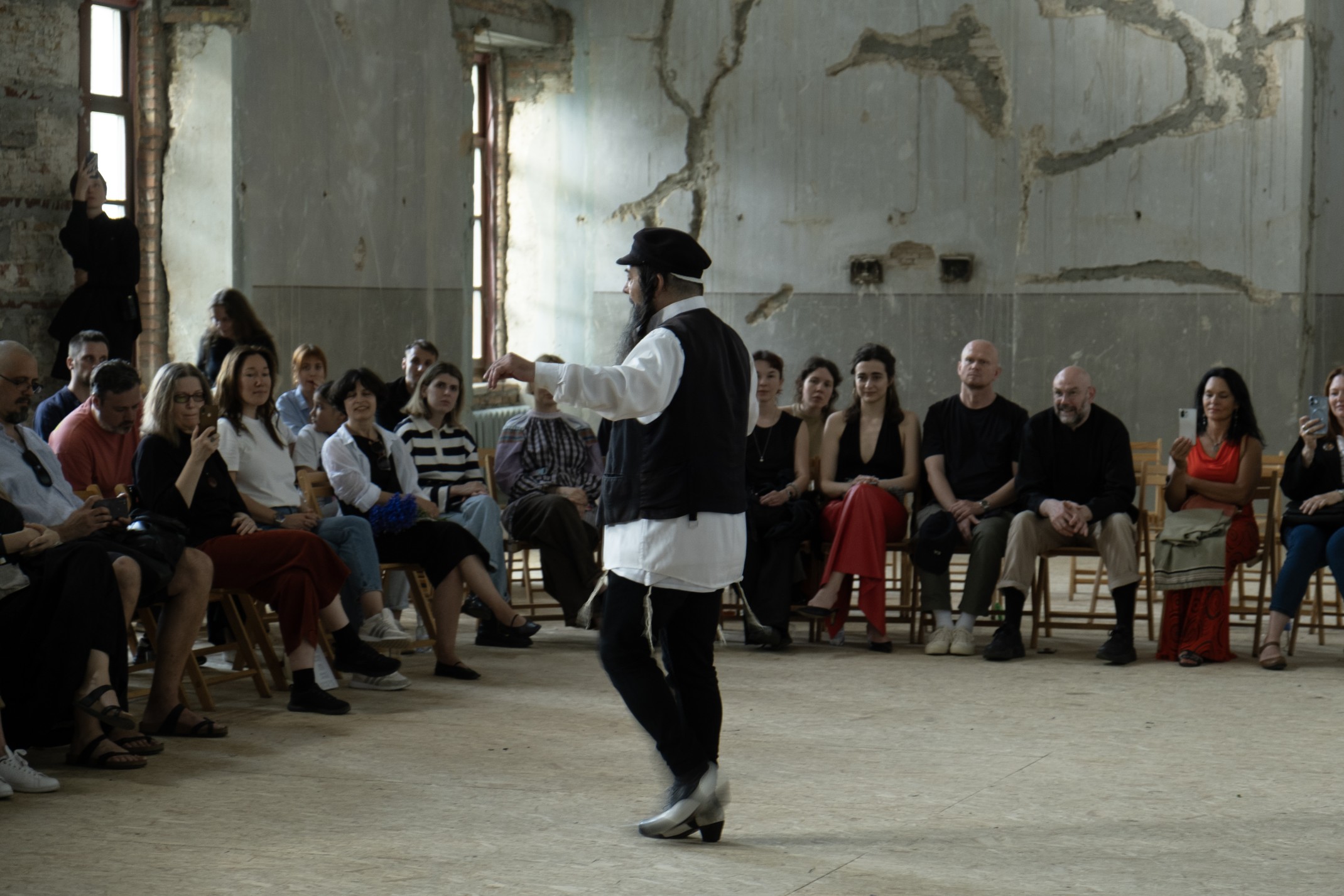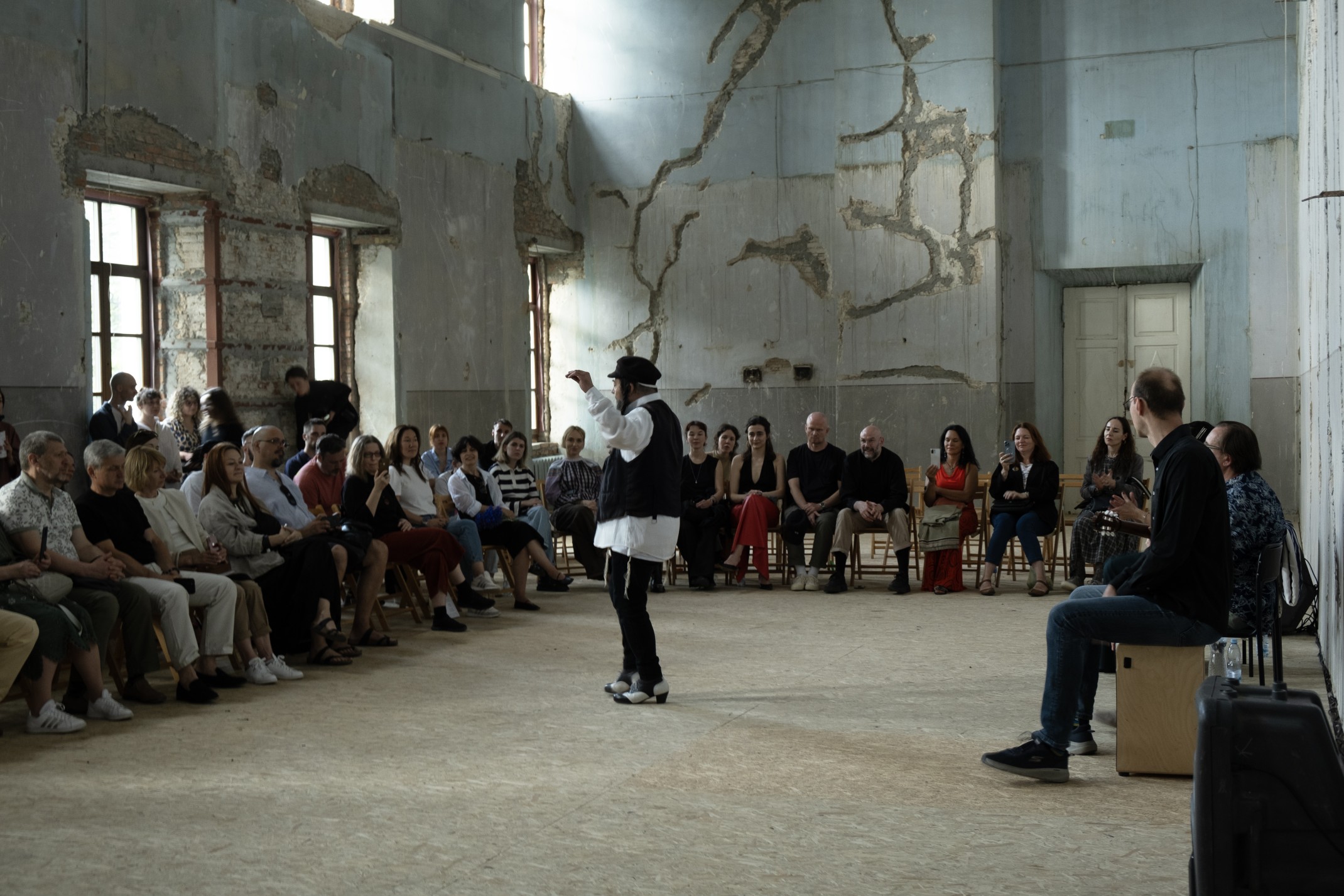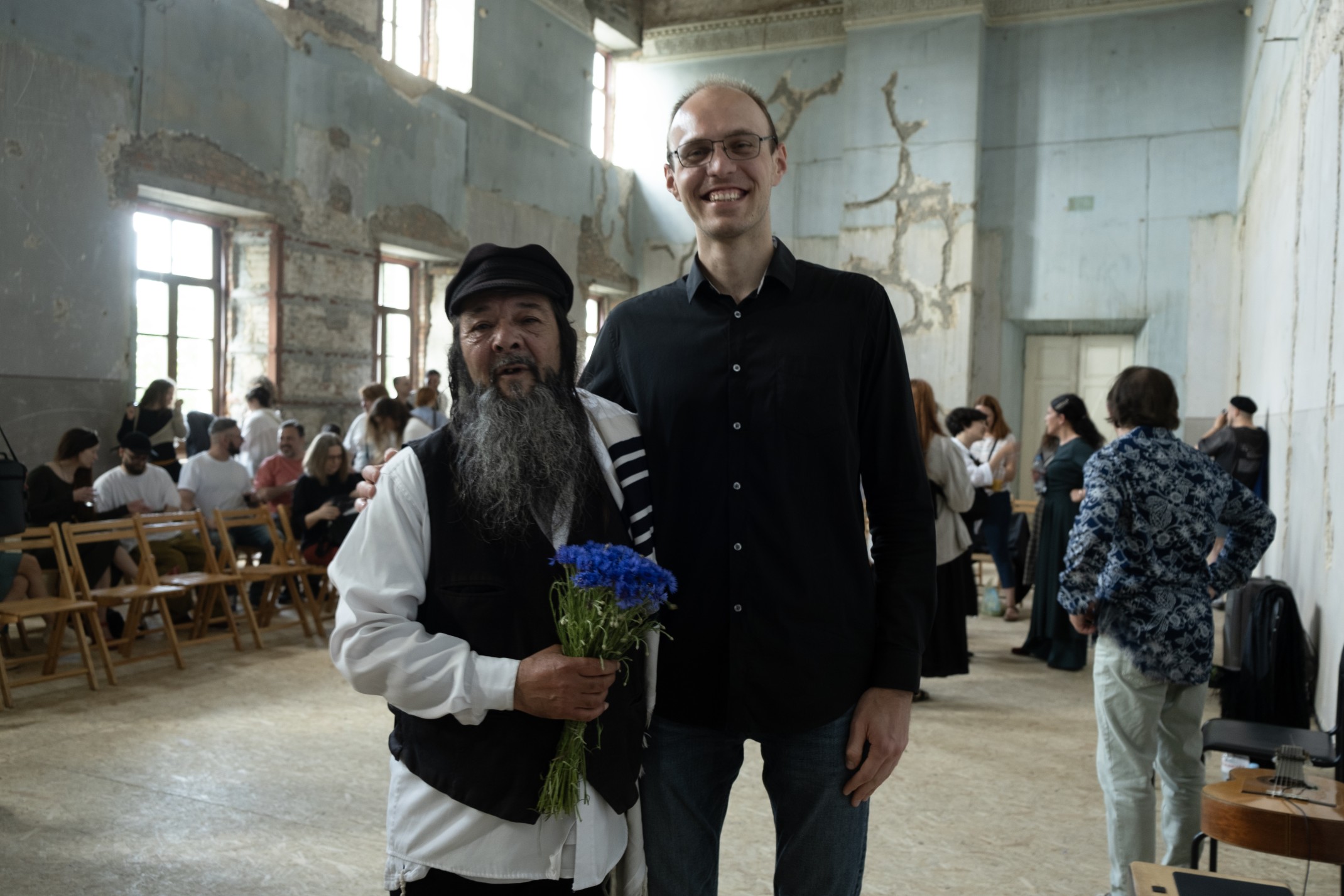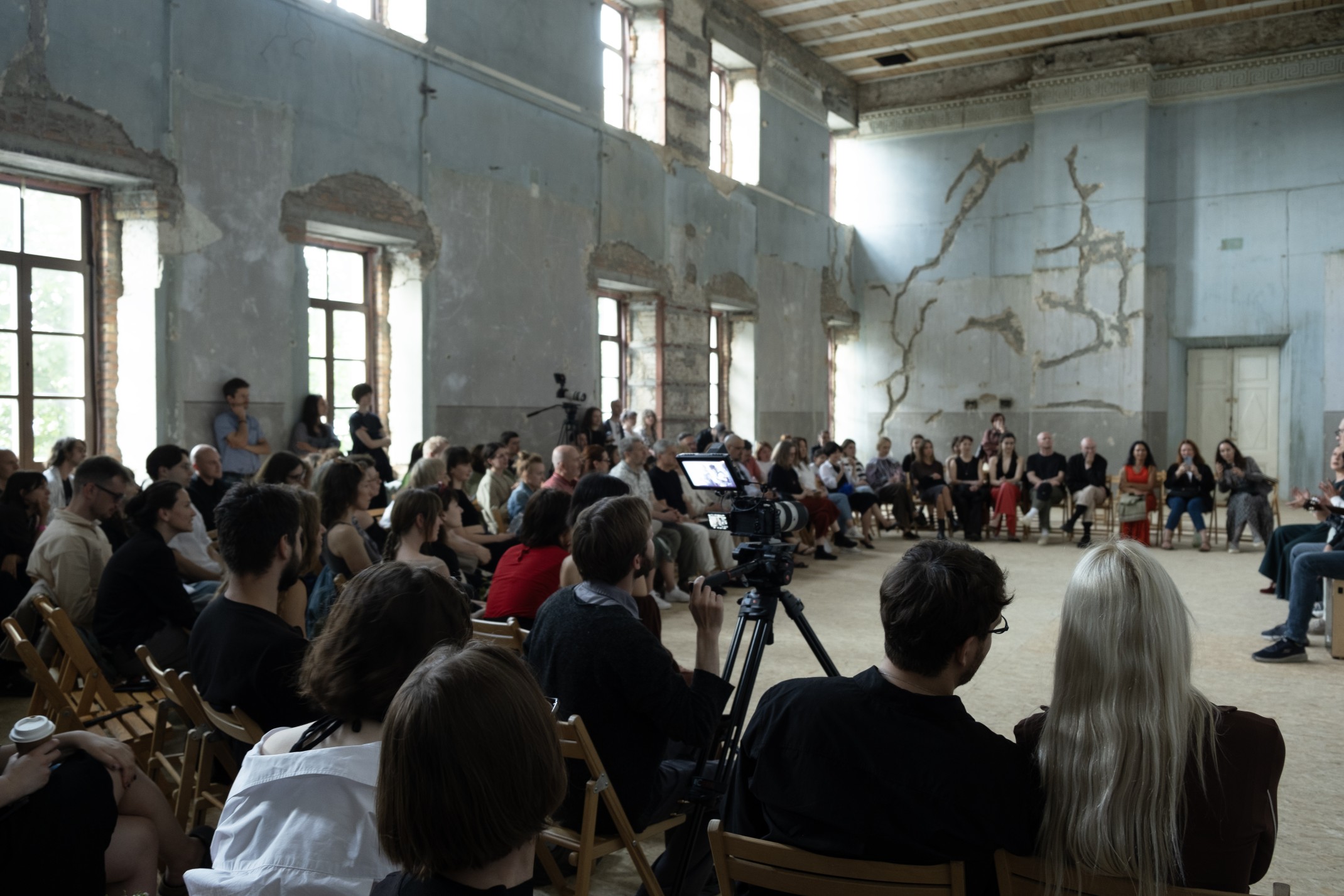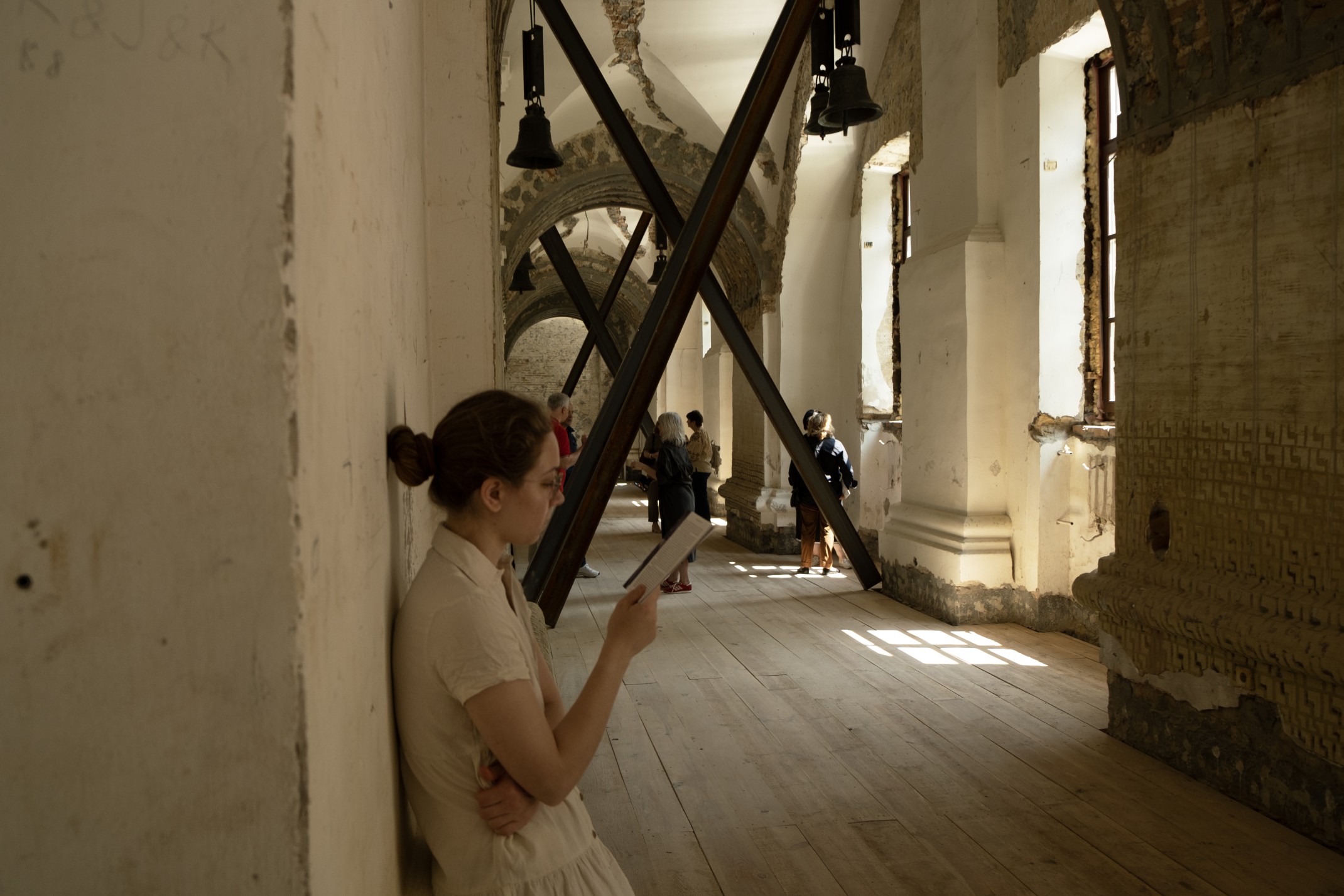«Фактура 10.04»—Янніс Кунелліс, «Без назви» (1997/2025)
Faktura 10.04—Jannis Kounellis, Untitled, 1997/2025
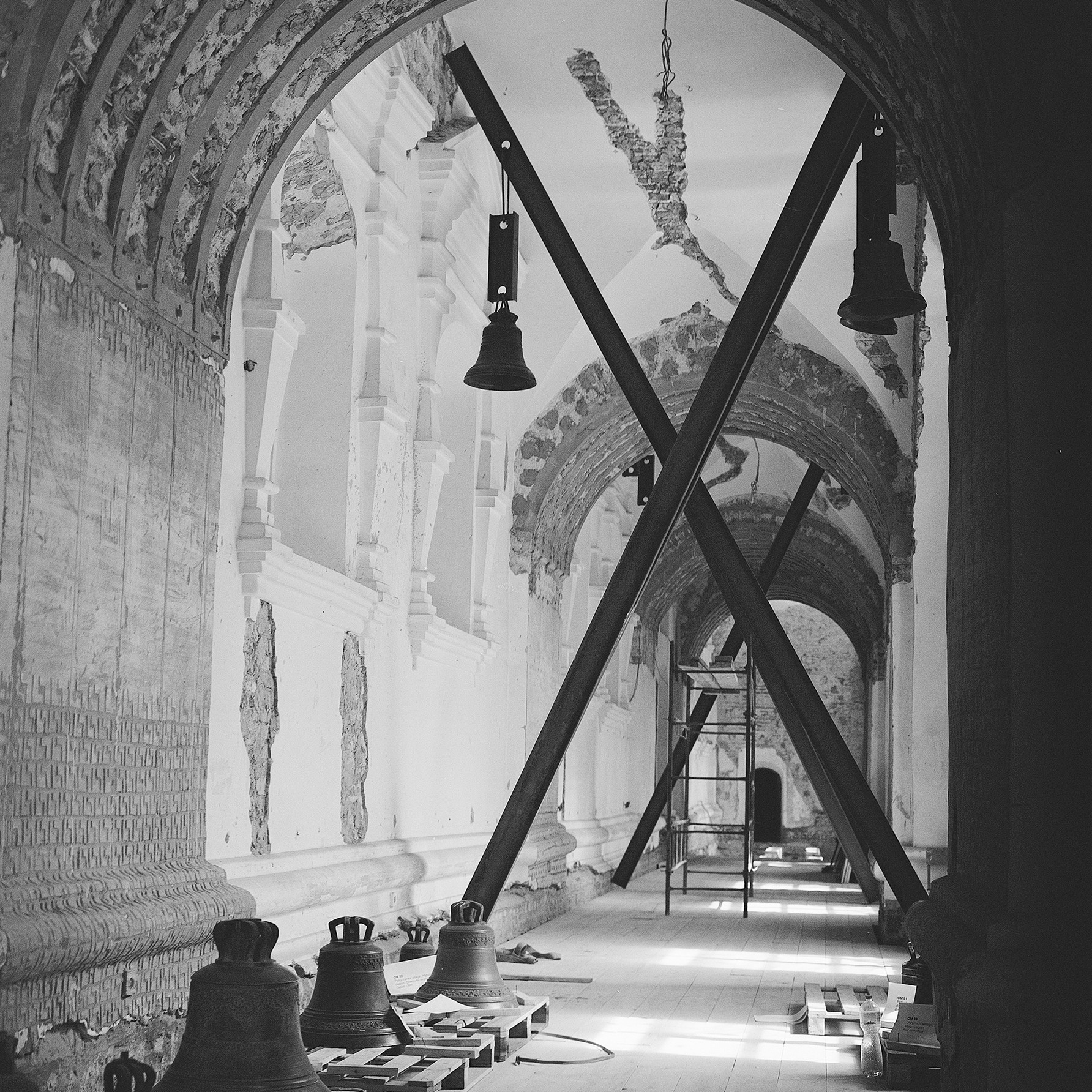
Янніс Кунелліс, «Без назви» (1997/2025)
Фактура 10 представляє: Янніс Кунелліс, Без назви, 1997/2025 — програма та інсталяція, що відкривається 15 червня 2025 року у Старому академічному корпусі Національного університету «Києво-Могилянська академія», Київ, Україна.
- Кураторка
- Марта Кузьма
- Де
- Староакадемічний корпус
Національний університет «Києво-Могилянська академія»
Київ, Україна - Коли
- 15 червня – 1 вересня 2025
У 1997 році мені випала рідкісна нагода попрацювати в Києві з художником Яннісом Кунеллісом в апсиді приміщення, яке тоді займав Центр сучасного мистецтва Сороса, — відреставрованої барокової будівлі, де першопочатково розміщувалася Києво-Могилянська академія. Кунеліс запропонував просту, але масштабну інтервенцію: встановити вздовж нефа сталеві двотаврові балки, з яких звисали би церковні дзвони. До дзвонів художник висував лише дві вимоги: щоб вони були історичними й походили з України. Цей план відповідав ролі Кунелліса як центральної фігури руху «arte povera», що відзначався, за словами Джермано Челанта, «новим ставленням до повернення “реального” панування над нашим існуванням [яке веде] художника до постійних вилазок за межі відведеного йому місця».
Упродовж усього проєкту Кунелліс часто говорив про український авангард до й після 1917 року. Обговорення заторкували творчість українського художника Давида Бурлюка, який проголошував, що «конструкції протилежна дисконструкція» і вірив у здатність конструкції бути «зміщеною або ж зрушеною». Бурлюк відродив термін «фактура» (вживаний щодо текстури живописної поверхні) на позначення процесу дослідження матеріальності. Спостереження й погляди Кунелліса — хоча сам митець міг цього не визнавати — нагадують ці історичні студії; останні, зокрема, перегукуються із його заявою про те, що «живопис має здатність до синтезу, тож щодо ідеї композиції в просторі — усі картини відзначає ступінь композиції, завжди давніший за них самих»
Реконструювати сьогодні в Україні створену Кунеллісом у 1997 році роботу означає визнати вплив війни на цього митця, який пережив Другу світову війну й громадянську війну в Греції. Використання художником індустріалізованих матеріалів (залишків руйнувань, часто використовуваних у промисловому виробництві воєнного часу) свідчило як про повоєнний стан людства, так і про розкол і потрясіння. Як зазначав митець, «після війни у нас є лише суперечності».
На тлі війни, яку продовжує вести Росія, відродження й відтворення цього проєкту в червні 2025 року є жестом, що привертає увагу до автономії мистецтва й життя. Перше втілення проєкту відзначалося суперечностями, а отримання дзвонів для нього оповите таємницею (залучити їх вдалося тільки завдяки розслідуванню, проведеному істориком архітектури із Західної України). Тим не менш, робота Кунелліса показала церковні дзвони як діалектичний об'єкт. Цього разу походження дзвонів прозоре, а їхня присутність у проєкті позначена духом співпраці: Музей дзвонів із замку Любарта в Луцьку позичив чотирнадцять датованих 1688–1925 роками дзвонів із православних і католицьких церков різних регіонів України; окрім того, деякі дзвони щедро надав Софійський собор у Києві. І — як митець і просив у 1997 році — для дзвонів без язиків відлили відсутні била: не для того, щоб дзвонити у них, але з метою відновити потенціал їхнього звучання.
Виставку «Янніс Кунелліс: “Без назви”, 1997/2025» курує Марта Кузьма, художня керівниця й головна кураторка «Фактури 10», професорка мистецтв Єльської школи мистецтв. Проєкт став можливим завдяки співпраці з Архівом Кунелліса в Римі й Національним університетом «Києво-Могилянська академія» в Києві. Оригінальний виставковий проєкт також курувала Марта Кузьма, у той час директорка-засновниця Центру сучасного мистецтва Сороса в Києві (1990–2000), спільно з Ніколо Астою і Джуліо Алессандрі.
Виставка «Янніс Кунелліс: “Без назви”, 1997/2025» є частиною «Фактури 10», ключової ініціативи «Ribbon International». Виставку реалізовано завдяки співпраці з «ФОРМА» (Київ).
Jannis Kounellis, Untitled, 1997/2025
Faktura 10 presents Jannis Kounellis, Untitled, 1997/2025, a program and installation that opens at The Old Academic Building of the National University of Kyiv-Mohyla Academy, Kyiv, Ukraine, on June 15, 2025.
- Curated by
- Marta Kuzma
- Location
- The Old Academic Building
National University of Kyiv-Mohyla Academy
Kyiv, Ukraine - Dates
- June 15 – September 1, 2025
In 1997, a rare opportunity arose to work with the artist Jannis Kounellis in Kyiv within the apse of what was, at that time, the Soros Center for Contemporary Art, housed in a renovated baroque-era building that had served as the original location of Kyiv-Mohyla Academy. Kounellis’s proposal was simple yet expansive—an intervention comprising steel I-beams mounted along the length of the nave from which would hang a series of church bells. Kounellis’s only conditions for the bells were that they be historic in origin and made in Ukraine. The artist’s plan corresponded with his role as a central figure of the Arte Povera movement, which possessed, according to Germano Celant, “a new attitude for taking repossession of a ‘real’ dominion over our existence [leading] the artist towards continual forays outside of the places assigned to him.”
Throughout the project, Kounellis often spoke about Ukraine’s avant-garde prior to and after 1917. Discussions ventured into the writings of Ukrainian painter David Burliuk, who characterized “deconstruction as the opposite of construction” and believed in the ability of construction to be “shifted or displaced.” Burliuk revived the term facture (a reference to the texture of a painting’s surface) to infer a process of investigation of materiality. While it was perhaps not recognized by Kounellis as such, his observations and perspectives recalled these historical inquiries—particularly in his professing that “painting has a capacity for synthesis, so an idea of composing in space, all paintings have an order of composition that is always more ancient than they are.”
Reconstructing Kounellis’s work from 1997 in Ukraine today is to recognize that Kounellis was an artist informed by war, having lived through World War II and the Greek Civil War. His integration of industrialized materials common to wartime production as remnants of destruction, spoke as much to the postwar human condition as it did to fracture and disruption. As the artist noted, “since the war, we have only contradictions.”
Amid a continuing war waged by Russia, the resurrection and reconstitution of this project in June 2025 stands as a gesture toward the autonomy of art and life. The original project was one of contradictions, and the procurement of the bells remains enigmatic (and was made possible only through some sleuthing by an architectural historian from the western region of Ukraine). Nevertheless, Kounellis’s work made evident that the church bell represented a dialectical object. For this iteration, the origin of the bells is transparent and cooperative—the Museum of the Bells, within Lubart’s Castle in Lutsk, has loaned fourteen examples, dating from 1688 to 1925, from both Orthodox and Catholic origins, and from various regions of Ukraine. In addition, bells have been generously loaned by Kyiv’s St. Sophia Cathedral. And—as was requested by the artist in 1997—clappers have been cast for those bells for which none exist, not for the purpose of being rung, but to reestablish the potential of their resonance.
Jannis Kounellis Untitled, 1997/2025 is curated by Marta Kuzma, Artistic Director and Chief Curator, Faktura 10, and Professor of Art at the Yale School of Art. The project has been made possible through the cooperation of the Archivio Kounellis in Rome and the The National University of Kyiv-Mohyla Academy in Kyiv, Ukraine. The original project was also curated by Marta Kuzma, then the Founding Director of the Soros Center for Contemporary Art in Kyiv (1990–2000) in cooperation with Nicolo Asta and Giulio Alessandri.
Jannis Kounellis, Untitled, 1997/2025 is part of Faktura 10, a core initiative of Ribbon International. It is made possible with the cooperation of ФОРМА, Kyiv.
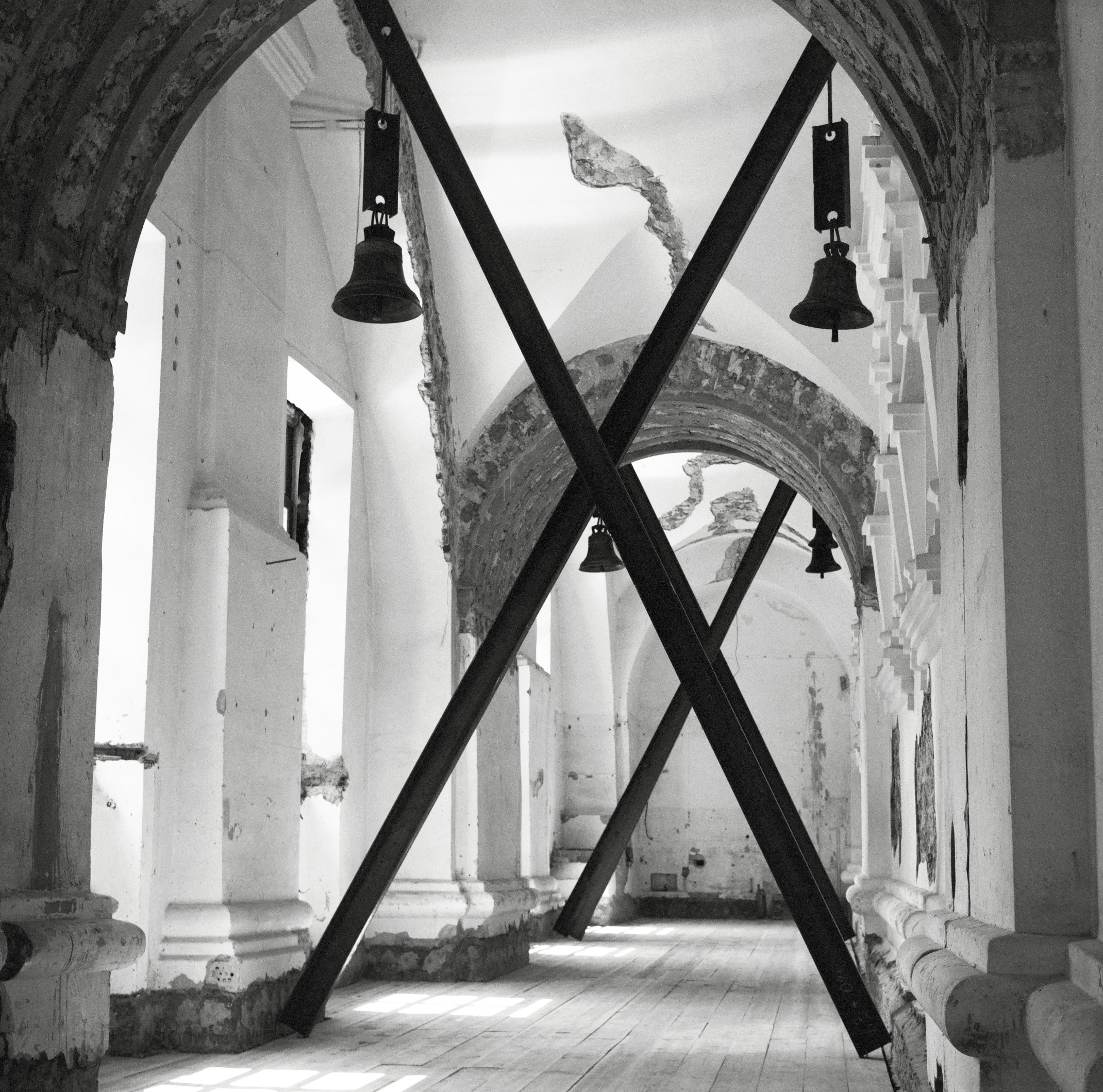

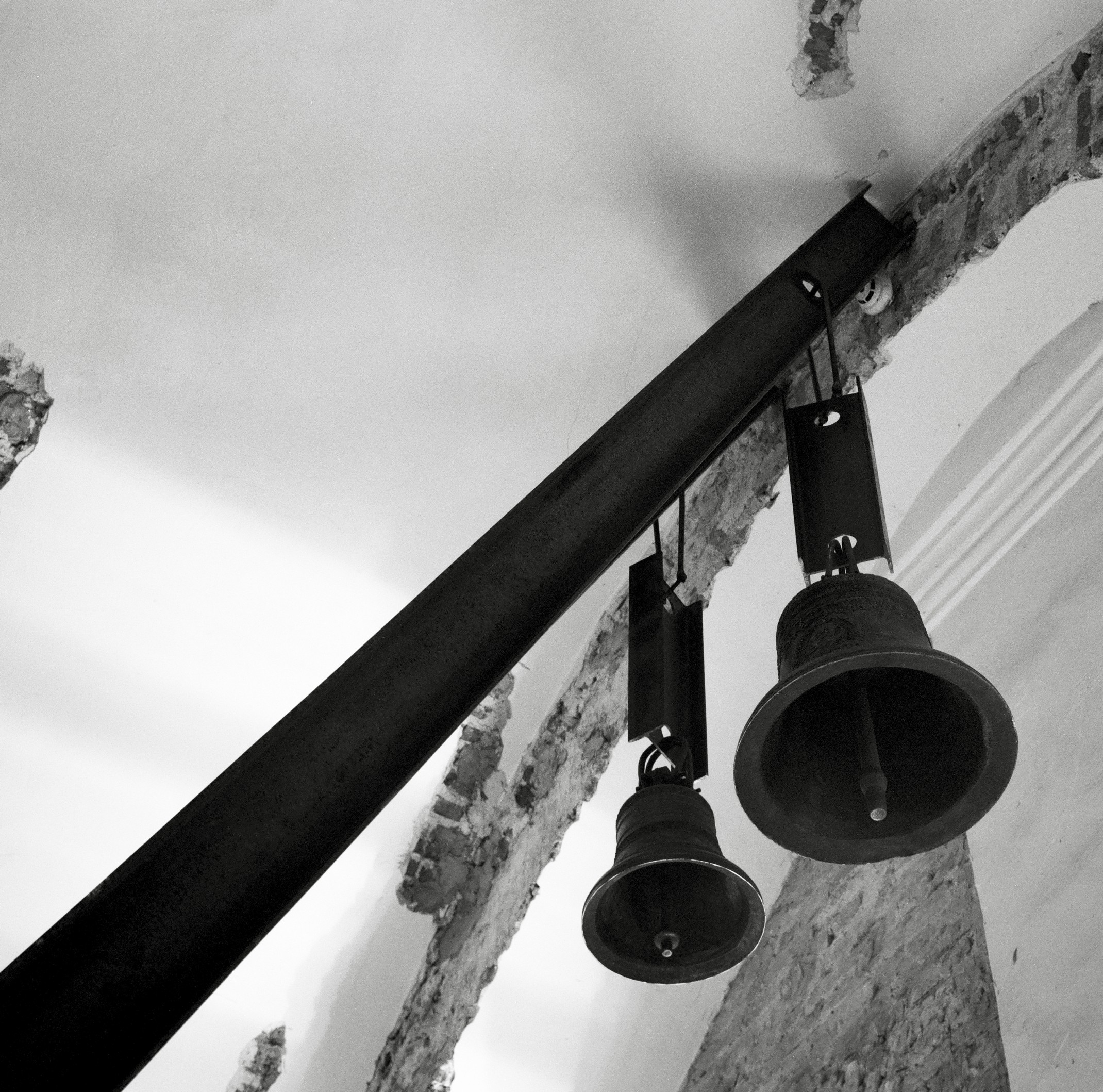
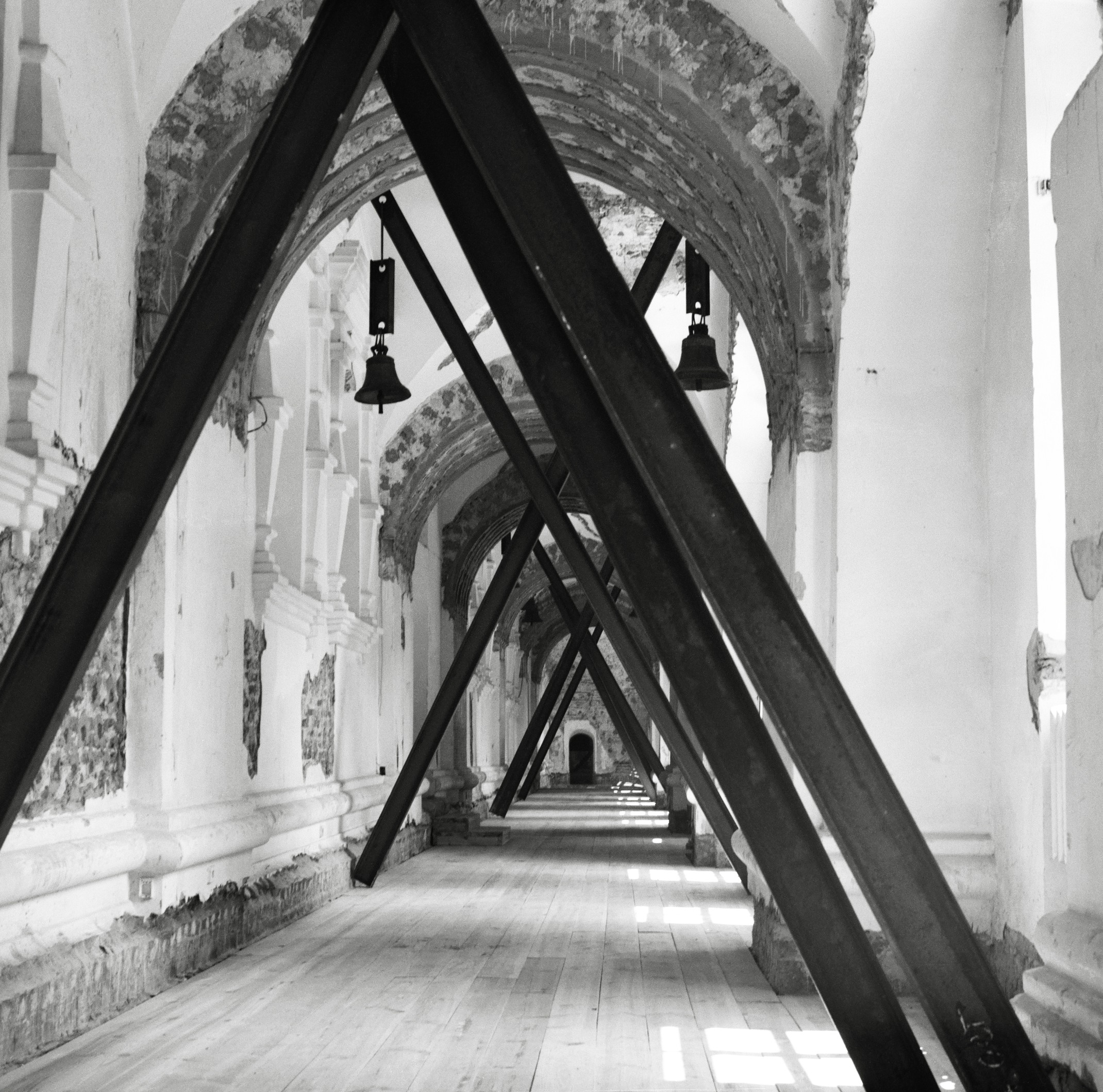
Відкриття 15 червня 2025
Староакадемічний корпус
Національний університет «Києво-Могилянська академія»
Київ, Україна
- 12:00
- Відкриття інсталяції для відвідувачів
- 13:00
- Вступне слово кураторки Марти Кузьми
- 13:30
- Зустріч у саду
- 14:00
- «Мала пісня» (І)
виконав(и)ці: Ісаак де Худеа й Ольга Островерх, у супроводі Павла Косенка та Олексія Хохуна;
кураторка: Саша Андрусик - 15:30
- «Мала пісня» (IІ)
виконав(и)ці: Ісаак де Худеа й Ольга Островерх, у супроводі Павла Косенка та Олексія Хохуна;
кураторка: Саша Андрусик - 16:00
- Діджей Сет—DJ Derbastler: піонер українського андеграунду
Opening June 15, 2025
The Old Academic Building
National University of Kyiv-Mohyla Academy
Hryhorii Skovoroda Str. 2
Kyiv, Ukraine
Free and open to the public
- 12:00
- Installation opens to the public
- 13:00
- Opening Remarks by the Curator, Marta Kuzma
- 13:30
- Gathering in the garden
- 14:00
- Small Song (I)
Performers: Isaac de Judea and Olga Ostroverkh, accompanied by Pavlo Kosenko and Oleksiy Khokhun.
Curated by Sasha Andrusyk - 15:30
- Small Song (II)
Performers: Isaac de Judea and Olga Ostroverkh, accompanied by Pavlo Kosenko and Oleksiy Khokhun.
Curated by Sasha Andrusyk - 16:00
- DJ Set—DJ Derbastler: Pioneer of the Ukrainian underground

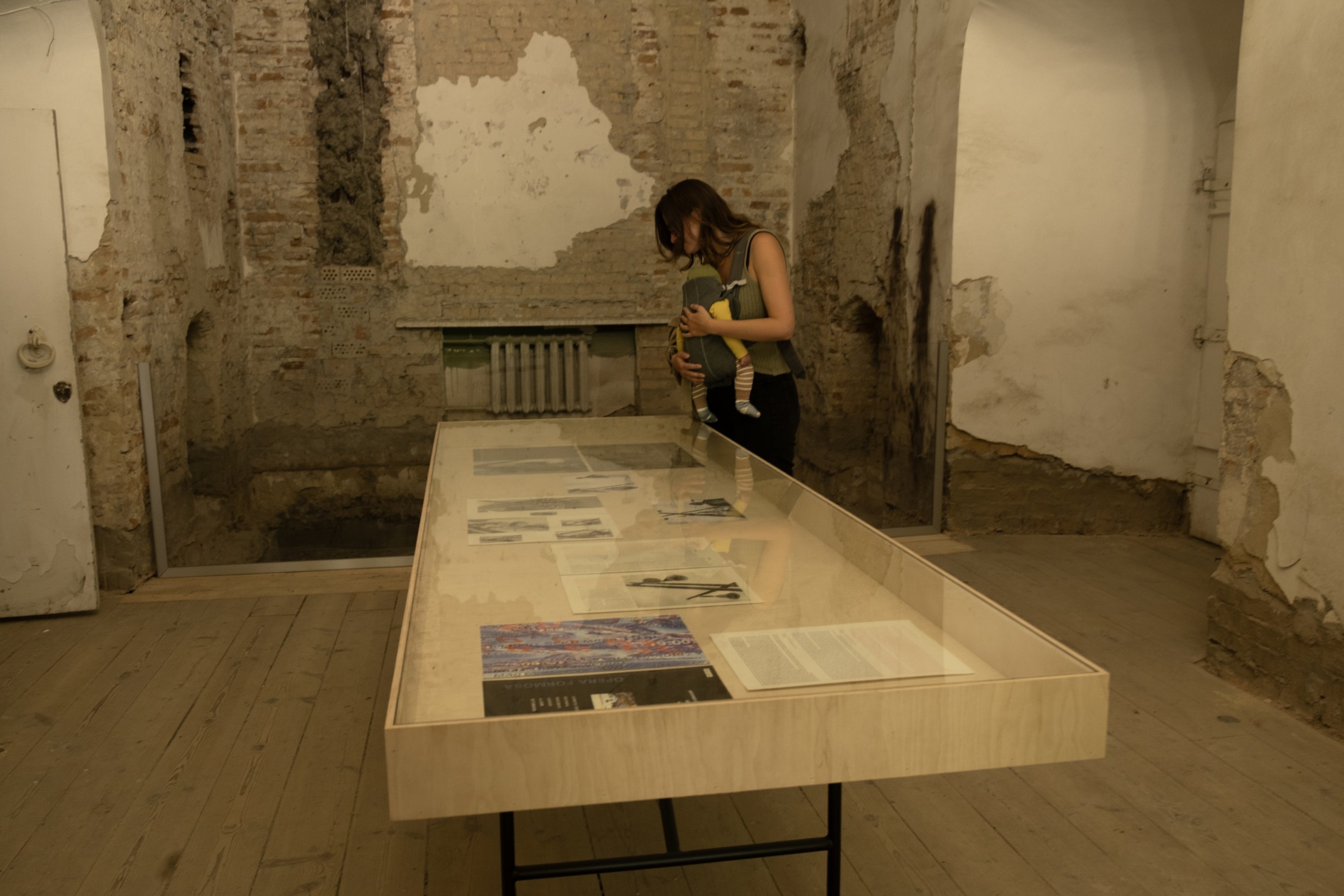
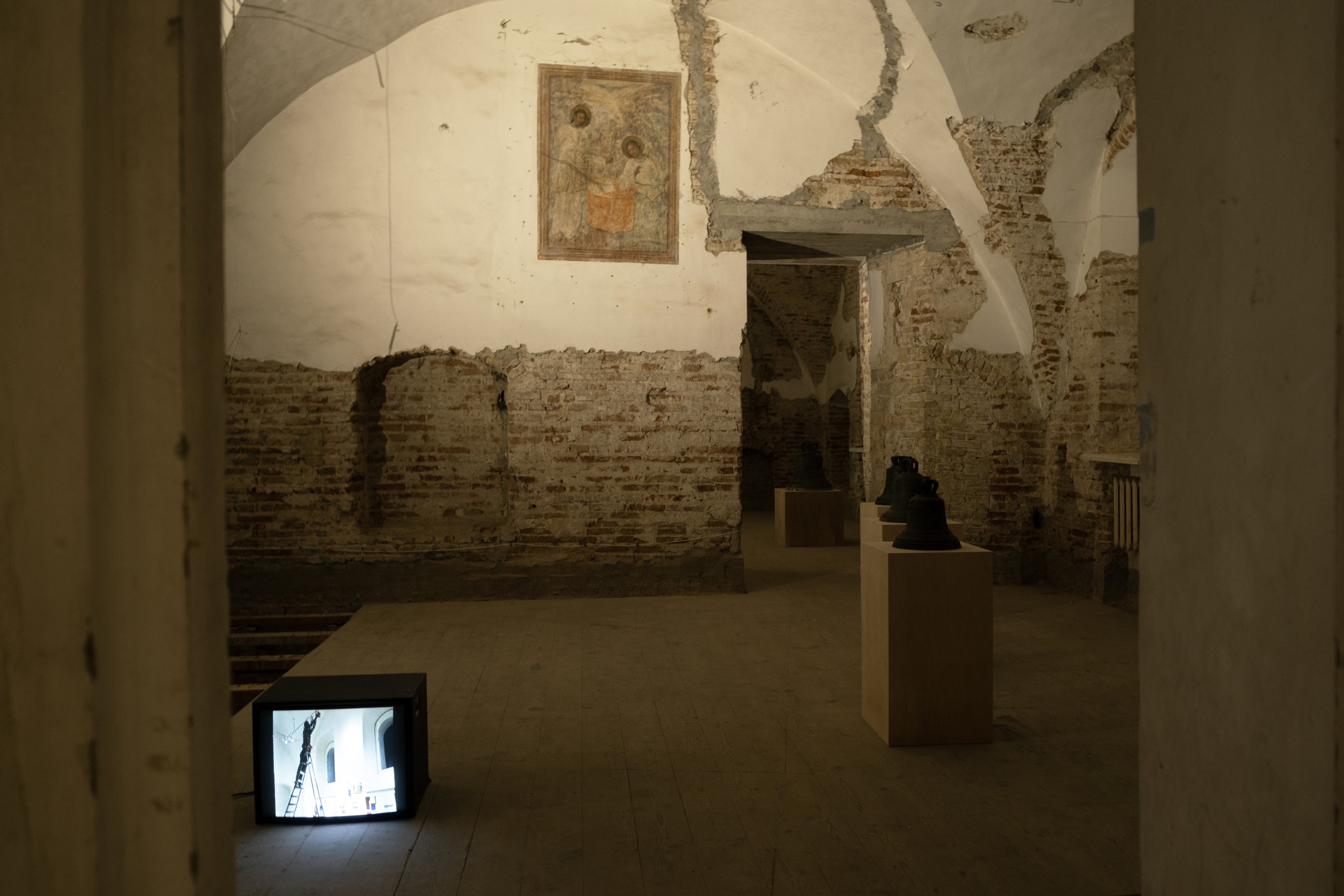
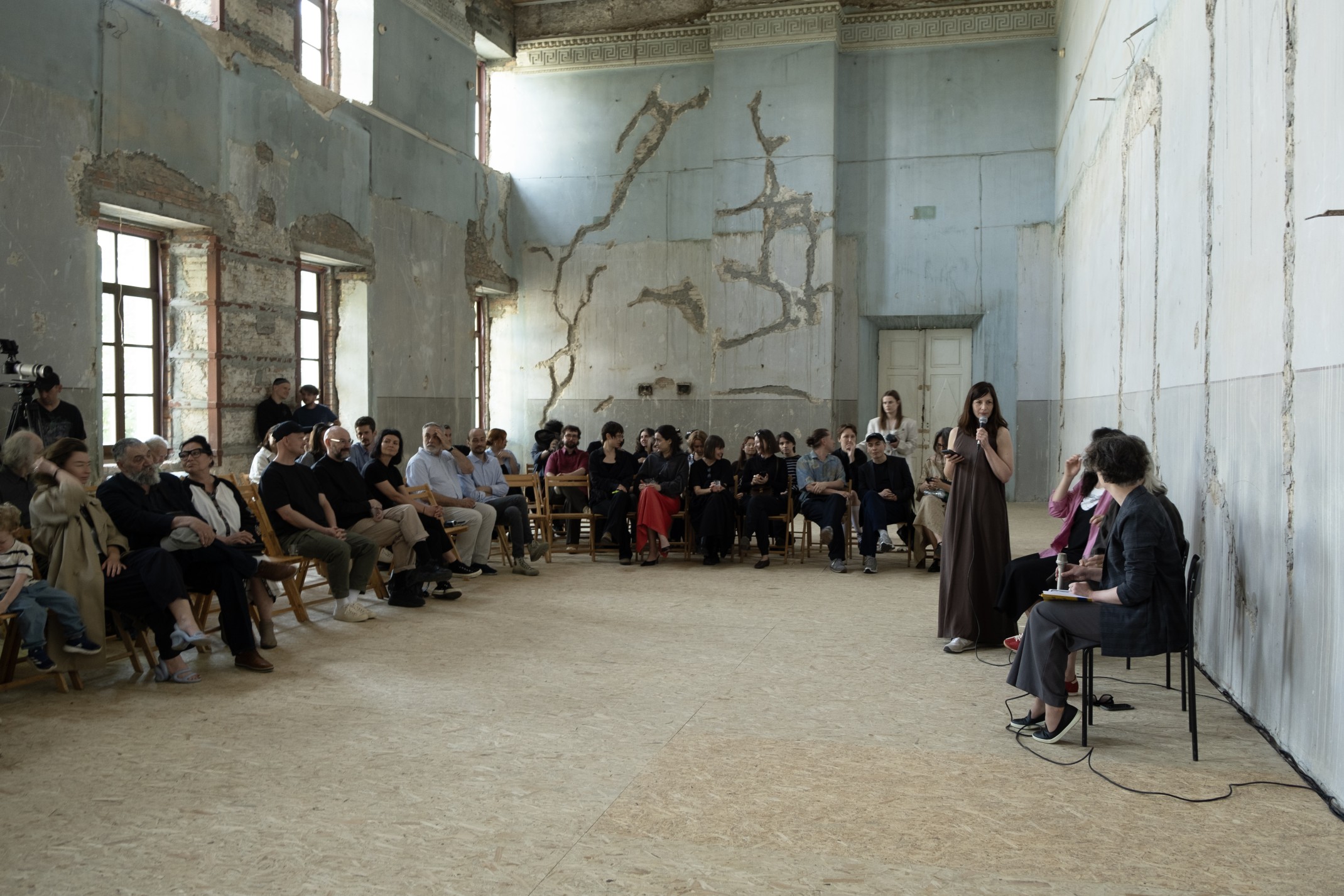
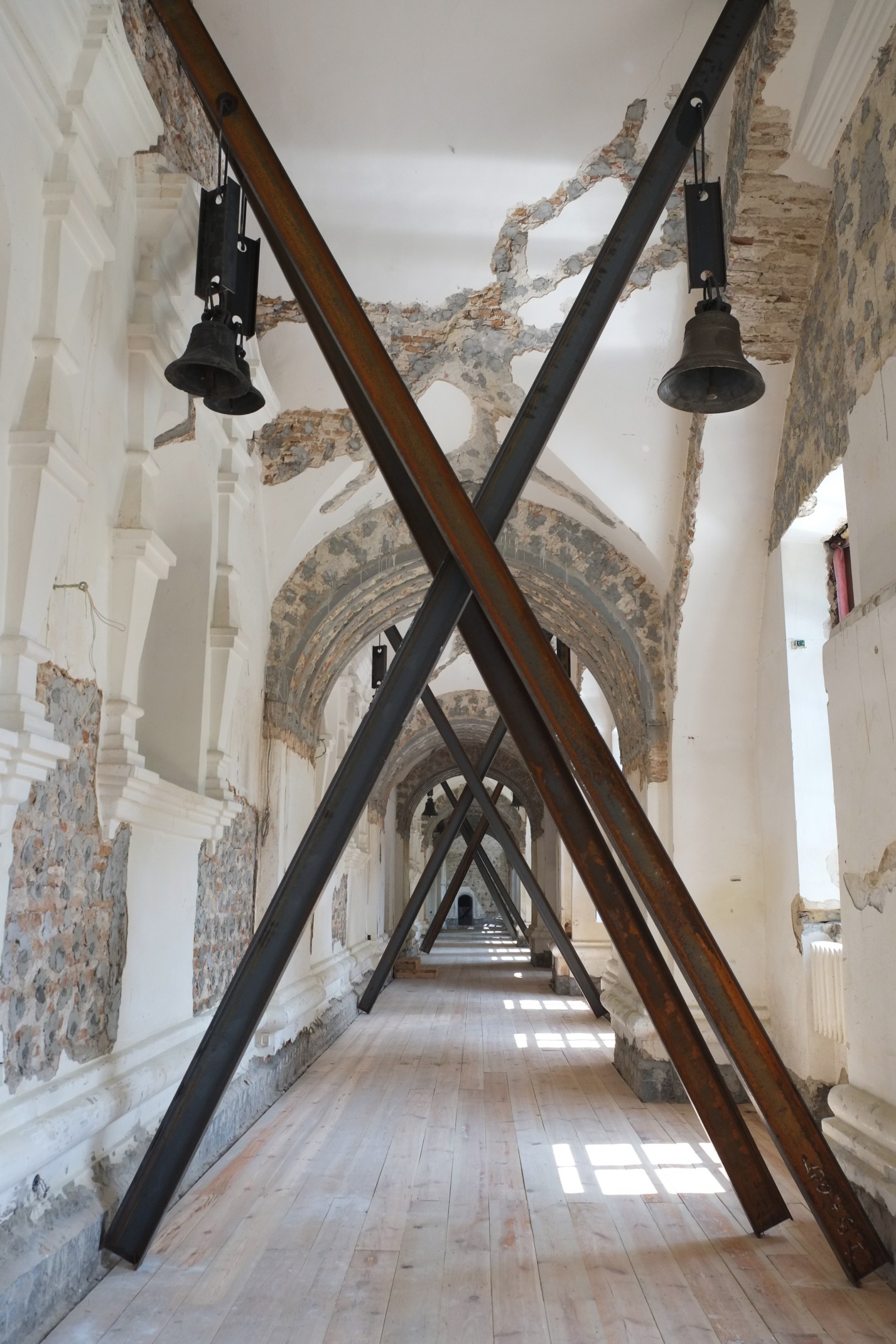
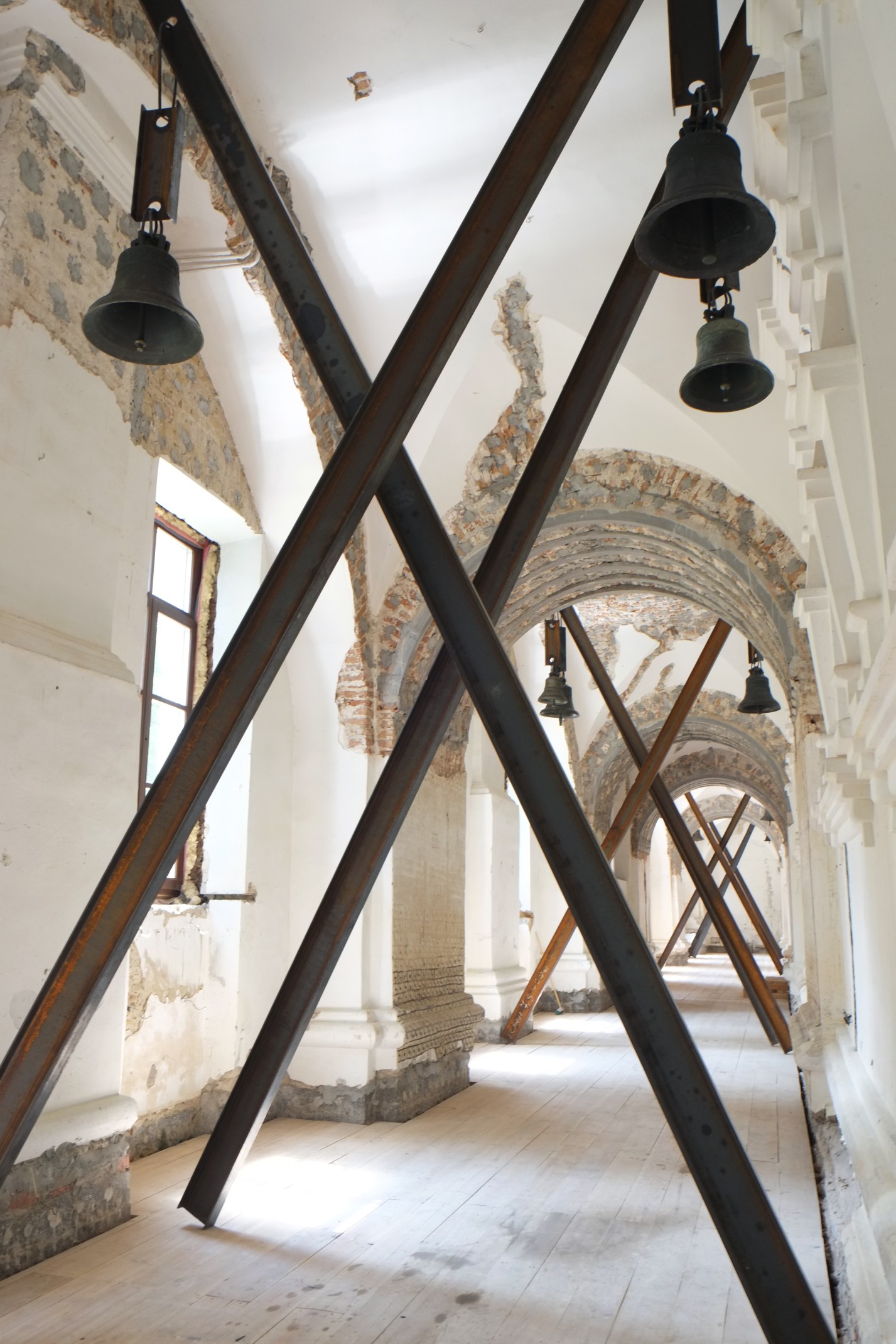
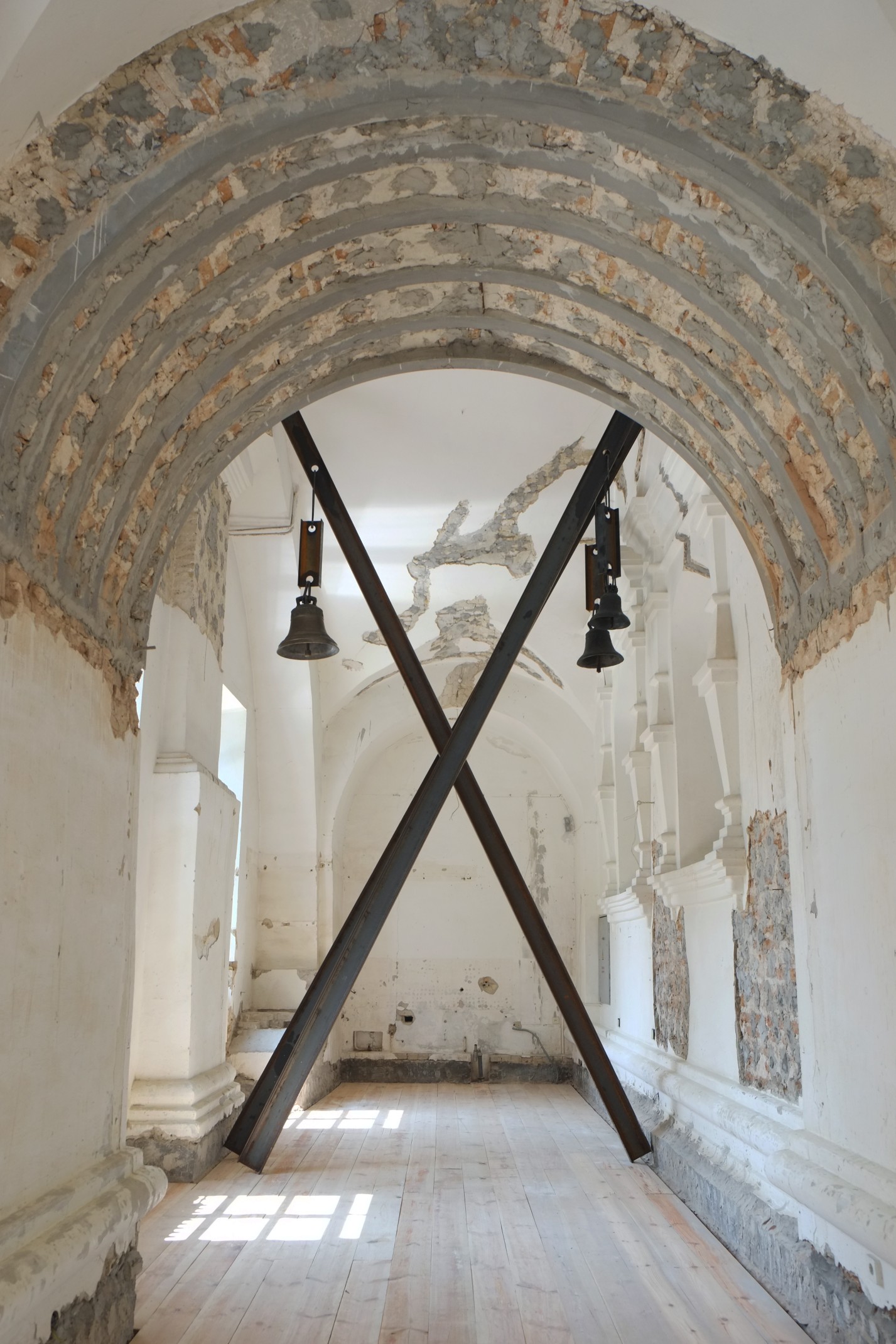
Мала пісня
Ісаак де Худеа та Ольга Островерх
У супроводі Павла Косенка та Олексія Хохуна
Кураторка — Саша Андрусик
Неділя, 15 червня 2025 року
Староакадемічний корпус Києво-Могилянської академії
Перфоманс-відкриття у виконанні Ісаака де Худеа та Ольги Островерх, у супроводі Павла Косенка (гітара) та Олексія Хохуна (кахон) — це колективна практика канте де фієста — тобто святкової, «легкої» гілки фламенко, до якої належать танцювальні форми на кшталт булеріас, алегріас та тангос. Вибір форми тут не естетичний, а літургійний. Згідно з вченням рабі Нахмана з Брацлава середина червня — це час, коли перед хасидами постає «обов’язок радості», коли її слід плекати та примножувати.
«Бути завжди радісним — це велика міцва», — пише рабі Нахман. У цьому контексті міцва — не просто добрий вчинок, а духовна заповідь, що допомагає вистояти перед страхом і стражданням.
Ісаак де Худеа, уродженець Гранади, нині мешкає в Умані — місті, де поховано рабі Нахмана — і сповідує вчення брацлавського хасидизму як у щоденному житті, так і у мистецькій практиці. У цьому перформансі де Худеа звертається до того, що раніше називали канте чіко — стилю, менш траурного, ніж канте хондо, з його темами смерті, болю та відчаю. Попри те, що чіко буквально означає «малий», у контексті фламенко цей епітет не означає спрощення чи зниження технічної складності, а вказує на побутовий або інтимний характер виконання. У цьому регістрі відбуваються найособистіші й найуразливіші фламенкові висловлювання. Тексти, які співає Ісаак, здебільшого написані або адаптовані ним особисто — відповідно до традиції фламенко, де співак нерідко є автором власного репертуару: Тангос де Гранада, Тангос де Умань, а також алегріас, в якому перегукуються єврейські сюжети Кадіса та Умані.
Фламенко тісно пов’язане з бідністю, адже виникло в середовищі маргіналізованих спільнот і часто виражає досвід опору та виживання. Попри різні культурні й історичні корені, фламенко має певну схожість з арте повера: обидві практики звертаються до аскези як способу трансформації. Так само, як фламенко працює з мінімальними ресурсами й нетиповими просторами, аби зосередитися на голосі, диханні, ритмі та тілесній присутності, арте повера та театро поверо відкидають зайве на користь ремісничого, процесуального та повсякденного.
Хоча фламенко часто є видовищним, структурно воно спирається на стриманість, повторюваність та тяглість. «Мала пісня» наголошує на цьому спільному ґрунті. Тут радість — не ефект, а дисципліна. Її не вдають, а виконують як настанову. Як учив рабі Нахман:
«Якщо віриш, що можеш завдати шкоди — повір, що можеш і зцілити».
Opening performance: Small Song
Isaac de Judea and Olga Ostroverkh
Accompanied by Pavlo Kosenko and Oleksiy Khokhun
Curated by Sasha Andrusyk
Sunday, 15 June, 2025
Old Academic Building of the Kyiv Mohyla Academy
The opening performance by Isaac de Judea and Olga Ostroverkh, as accompanied by Pavlo Kosenko (guitar) and Oleksiy Khokhun (cajón), is a shared practice of cante de fiesta and cante chico—which, translated as light-hearted song, represents the festive branch of flamenco-associated dance forms such as alegrías and tangos.
The choice of dance form is not intended as aesthetic but liturgical. That is, according to the teachings of Rabbi Nachman of Breslov, founder of the Breslov Hasidic movement, the period of mid-June obliges Hasidim to cultivate and transmit joy.
“It is a great mitzvah to always be happy,” Rabbi Nachman writes. In this context, mitzvah refers not simply to a good deed but to a divine commandment: joy as a religious obligation.
Isaac de Judea, originally from Granada and now based in Uman, the site of Rabbi Nachman’s gravesite, observes Breslov teachings in both daily life and artistic practice. In this particular performance, de Judea opts for cante chico, considered less solemn than the distinctive melodic style cante jondo, which refers to death, anguish, and despair. Although chico may literally mean “small,” its use here does not imply lesser technical skill but reflects a cultural framing of these songs as informal or domestic. Many of the most personal and versatile flamenco expressions take place within this register—within an intimacy to which this performance adheres. Most of the lyrics sung by Isaac have been authored or adapted by himself, following a longstanding tradition within flamenco in which singers compose their own verses—among them tangos de Granada, tangos de Kyiv, tangos de Uman, and alegrías referencing Jewish histories in both Cádiz and Uman.
Flamenco has a complex relationship to poverty, rooted in its origins among marginalized communities. It has served as a powerful symbol of resistance. Although it emerges from different cultural and historical contexts, flamenco shares with Arte povera a commitment to transformation through austerity. Just as flamenco employs minimal resources to emphasize the essential elements of performance—often in unconventional spaces—Arte povera rejected the superfluous in favor of artisanal materials and processual practice, as expressed in teatro povero.
Flamenco, particularly in its traditional settings, foregrounds voice, breath, compás, and bodily presence. While it has often engaged with spectacle, it remains structurally anchored in constraint, repetition, and transmission. This performance underscores that common ground. Here, joy is not performed for effect, but enacted as discipline.
As Rabbi Nachman taught:
“If you believe you can damage, then believe you can repair.”
